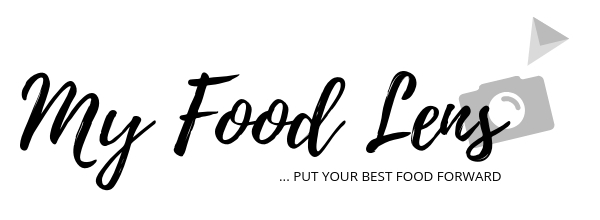
Today, we are talking about a subject that forms the very
essence of everything we create in food photography. It’s a
topic we’re passionate about, but it’s also one of our biggest challenges: Light.
Specifically, we’ll be uncovering a huge misconception about lighting for moody photography.

Mood in food photography
But before we dive into moody lighting, let’s understand the concept of moody photography.
Moody photography encompasses different moods, from bright and moody to dark and moody, and everything in between. It’s all about the nuanced interplay of light and shadow.
While moody photography can have various forms, moody photos are usually not light and airy. They exude a certain weight, with deeper shadows and a touch of mystique.
The misconception about lighting
The key to creating mood in a photo is light. The interplay of brightness, shadows, and highlights is what sets the mood.
However, a common and misleading advice we come across in photography is the notion of underexposing photos to create a moody effect.
Underexposing photos, in general, has its merits. It preserves details and offers more flexibility during the editing process. Overexposing is generally not recommended, unless it aligns with our artistic vision.
However, stating that moody photos should be underexposed is not entirely accurate.
Creating mood in a photo requires the right exposure and deliberate manipulation of light, not just reducing overall exposure. We can slightly lower the exposure to have more flexibility while editing, but that should not be the primary technique for creating mood.
Mood is created from the careful manipulation of light, not only reducing exposure.
To create a moody photo, we need to consider the brightness of whites and highlights and the depth of shadows. Mood demands special attention to shadows, aiming to “create” light in a way that accentuates the shadows.
To create mood, we need to extract moodiness from the light, creating the right proportions of shadows and highlights that convey moody feelings to the viewer.
Underexposing a photo means reducing overall light, but mood is crafted by intentionally reducing light in specific areas where we want less brightness. The distinction is important.
The nature of light is based on factors like the height of the light source, its distance, its size, etc. We can use white and black boards to adjust the intensity of highlights and shadows, creating the desired mood.
It’s all about manipulating light to extract the moodiness we seek.

Conclusion
The key to creating mood in a photo is understanding and skilfully manipulating light. Underexposing photos serves a different purpose, and regardless of this technique, we still need to craft, create, and manipulate light to achieve a successful moody photo.
An underexposed photo is not inherently a moody photo in the technical sense. Even a bright and airy photo can be underexposed.
The next time someone advises underexposing your photos to achieve a moody effect, you know there’s so much more to creating moody food photography.
If you’re listening on Apple podcast or iTunes, please rate, review and subscribe on iTunes/Apple podcast. It will help this podcast reach more listeners and grow bigger and better. I’ll be so grateful.
